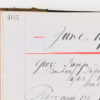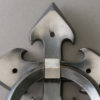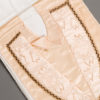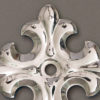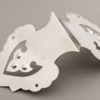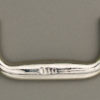The most important workshop on the second floor was the Shroud Room, which the ladies who worked there more commonly called the Sewing Room. This occupied the whole of the front range, and its height maximised the available light. This was almost exclusively the domain of women; at least 15 ladies worked in the room. Here were made the funerary robes in which the deceased would be dressed, and the pillows and linings for the coffin. On the shelves are the roles of material, originally silks, cottons, satins, swansdown and lace, but by the later years all largely synthetic.


